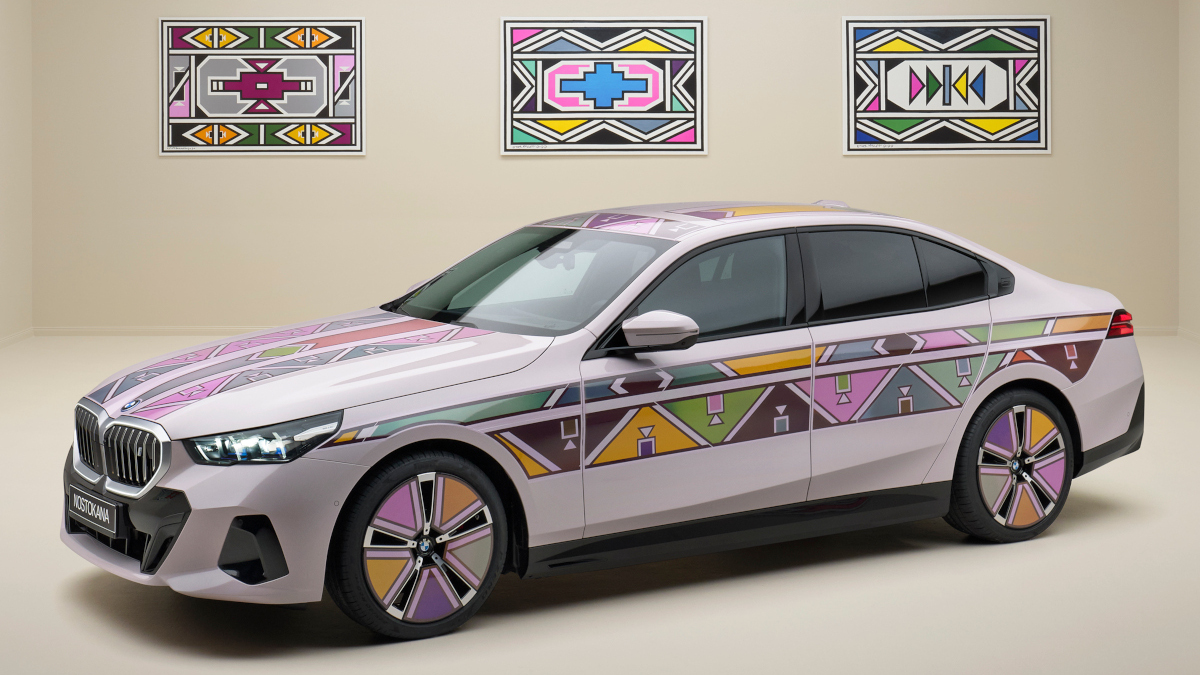Almost no energy consumption, readable even in direct sunlight: A new digital signage category is emerging with large-format e-paper displays. The first display manufacturers have already launched commercial solutions.

E-Paper-Displays: Supersizing Shelf Labels
E-paper displays were once mainly monochrome and used for electronic shelf labels (ESLs), millions of which can be found in food retailers, electronics stores, and even Starbucks.
More than 600 million 3-inch ESLs have been deployed in the past seven years alone. Now, e-paper displays are available in color and larger sizes which makes them suitable for digital signage. Upcoming models are aiming to replace printed large-format posters in public spaces.
Manufacturers are catching up
More and more digital signage providers are offering e-paper displays. Philips (PPDS), Dynascan, and Sharp are the first large-format display manufacturers to integrate e-paper-based displays into their existing digital signage ecosystems. Samsung also recently announced an e-paper display product, and companies like Visionect specialize in e-paper products, including a specialized CMS software.
All three companies use e-paper displays from E Ink, the Taiwanese manufacturer that dominates the global e-paper market with over 90% market share. Alongside leading ESL providers like BOE (Vusion), visual solution manufacturers are now developing professional digital signage solutions using E Ink’s e-paper screens.
Green and in color
E-paper technology was initially developed by Xerox in the 1970s but was never commercialized. The breakthrough came in the 1990s when a team from MIT advanced the technology using electrically charged particles in colored oil. With support from companies like Philips, the monochrome e-paper technology was eventually brought to market.
Today, E Ink offers the latest generation of Spectra 6 e-paper displays with 60,000 colors, almost 180 degree viewing angles, and paper-like, high contrast.
Special ink set
The big advantage: The content on e-paper displays is changed by briefly applying an electrical voltage and then remains stable for several weeks. This means that the displays do not consume any energy in standard operation. However, displaying video or animated content is not possible with that technology because it takes several seconds to refresh the display with new colored content.
The Spectra 6 technology enables a wide range of colors for the first time. This is achieved through an ink system with four colors that rise to the surface depending on the applied voltage.
Alternative to printed posters
In contrast to ESLs, e-paper displays have not yet played a major role in the digital signage market due to the limited application scenarios. But with the increasing demand for sustainable digital signage solutions and significantly increased display sizes, e-paper is becoming an interesting alternative to printed posters. According to E Ink, e-paper displays are approximately 12,000 times more efficient in terms of carbon emissions than comparable LCD displays and 60,000 times more efficient than printed posters.
As always, the comparisons should be viewed with caution, but it remains undisputed that color e-papers, with reduced application options compared to LCDs, consume almost no electricity. Philips powers its current Tableaux e-paper generation via Power over Ethernet (PoE), while Sharp uses batteries. The silicon valley company Digital View has just released a model that utilizes wireless infrared charging technology from the Israeli start-up Wi-Charge.
From small to extra large
While e-paper has long been standard in electronic shelf labels (ESLs) and millions of e-book readers like Amazon’s Kindle, its use in digital signage is relatively new. It was the introduction of screen sizes of 24 inches and larger, and especially the introduction of color displays, that have made it an interesting option.
What’s now possible in terms of screen sizes could be seen at Touch Taiwan in April 2024, where an 88-inch color E ink-based video wall was introduced. The six-element wall has ultra-narrow bezels that appear to be even slimmer than LCD video walls. E Ink calls this latest DOOH solution Low Carbon Advertising Displays and hopes for great market interest. E Ink is also collaborating with AUO and other display manufacturers to develop larger, large-format e-paper displays.
In Germany, Deutsche Telekom is testing e-paper displays for DOOH networks in collaboration with Philips. These e-paper displays are mounted on roadside telecom cabinets, offering local DOOH marketing while bypassing certain regulations. In Germany, non-self-illuminating DOOH screens smaller than one square meter do not require approval.
Also for outdoor
The latest E Ink Kaleido e-paper displays will also be available as an outdoor version. These models can operate in temperatures ranging from -15 to +65 degrees Celsius, making them ideal for use in Europe and North America as DooH screens and for transit stop departure boards, where temperature-resistant screens are essential.
E Ink also offers its own e-paper technology as a film for cars – a spectacular example was the new Art-BMW Flow I5 Nostokana –, and for architectural use as an e-paper tile. The E Ink Prism Tiles can display digital signage content as well as graphics and patterns and are already being used in corporate lobbies.

